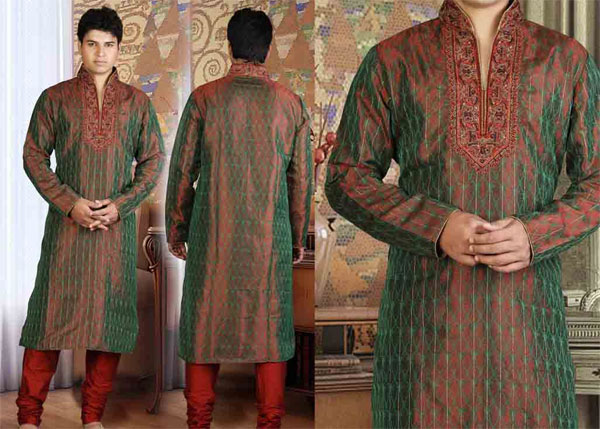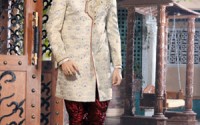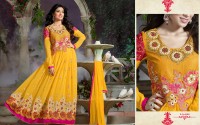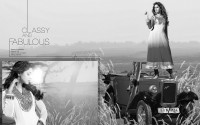Traditional Kurta for a Unique Indian Look
The kurta is a generic term used in South Asia for several forms of upper garments for men with regional variations of form. It is a traditional wear for men. Conventionally they are paired with the traditional payjama to complete the outfit.
The word “kurta” is a borrowing from Hindustani, and originally from Persian (literally, “a collarless shirt”) and was first used in English in the 20th century. kurta is a piece of clothing worn by males, it is usually worn for fashion, tradition and culture. The kurta is variously known as an angarkha in Gujarat and Rajasthan.
The traditional kurta worn by Indian men for ages has now become almost unrecognizable in its contemporary modern avatar. Not until recently could men have imagined that the kurta they take so much for granted can be worn for a unique look! But designers are a creative species who love to break through traditional notions and that is exactly what they have done with the common place Indian kurta.
Kurta consists of rectangular fabric pieces with perhaps a few gusset inserts, and is cut so as to leave no wasted fabric. The cut is usually simple, although decorative treatments can be elaborate.The sleeves of a traditional kurta fall straight to the wrist; they do not narrow, as do many Western-cut sleeves. Sleeves are not cuffed, just hemmed and decorated.
The kurta usually opens in the front; some styles, however, button at the shoulder seam. The front opening is often a hemmed slit in the fabric, tied or buttoned at the top; some kurtas, however, have plackets rather than slits. The opening may be centered on the chest, or positioned off center.
A traditional kurta does not have a collar. Modern variants may feature stand-up collars of the type known to tailors and seamstresses as “mandarin” collars. These are the same sort of collars seen on achkans, sherwanis, and Nehru jackets.
The neck shape and style of the kurta has been retained and the sleeves modified. The Nehru collar and roll-up sleeves draw attention to a strong bone structure. The result is a leaner, body contouring shape that has transformed the floppy traditional garment into a sophisticated, tailored garment.
Kurtas worn in the summer months are usually made of thin silk or cotton fabrics; winter season kurtas are made of thicker fabric such as wool (as in Kashmiri kurtas) or Khadi silk, a thick, coarse, handspun and handwoven silk that may be mixed with other fibers. A very common fabric for kurta pajama these days is linen, or linen cotton mix ideal for both summers and winters.
Among the several hues such as cream, off white, white etc. one might very easily select the only one which turns out nicely on your appearance and character. These kurtas are perfect during the scorching summer and in winters they can be combined with half or full Nehru Jackets. Partying will remain a part of your evenings and fashionable wear will always be needed.
Kurtas can be worn with jeans.Most of the kurtas are often match with the blue jeans. Typically these garments are quite affordable and because they can be so versatile, you should remember that you can wear them for occasions of all kinds so whatever price you pay, it will be a great value.




